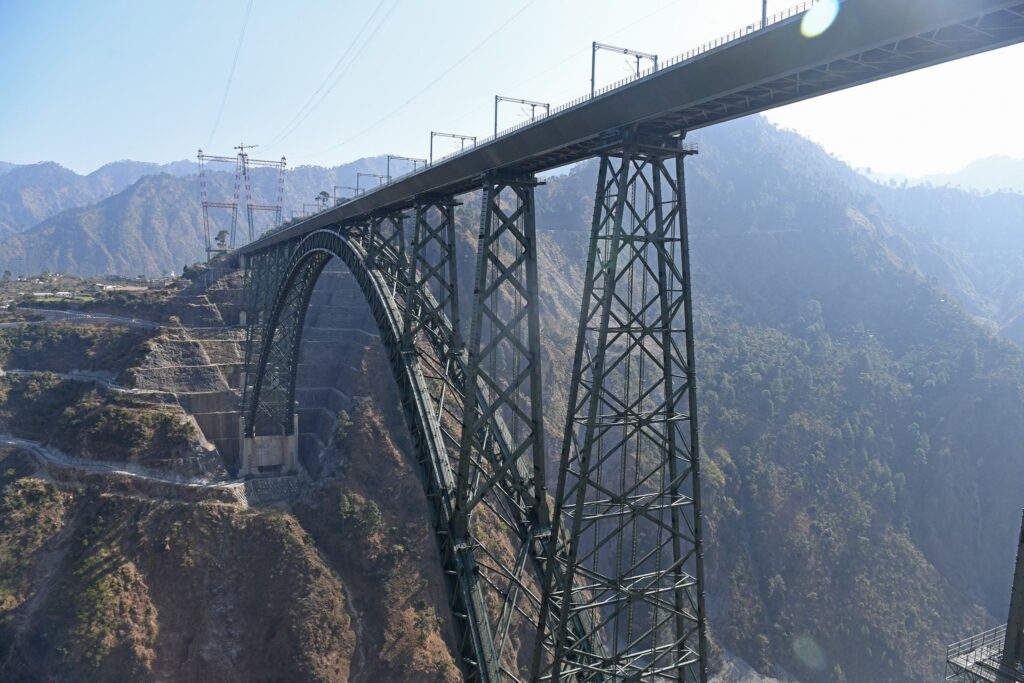Terror tried to break the momentum — but Kashmir’s spirit proved unshakable. A united front of hoteliers, houseboat owners, and government support brought back hope — and the tourists.
The pristine waters of Dal Lake shimmer with renewed life as colorful shikaras ferry thousands of visitors across Srinagar’s iconic waterway. The sound of laughter mingles with the gentle lapping of waves against houseboats, while the majestic Himalayas stand sentinel over a region that has defied all odds to emerge as India’s most inspiring tourism success story of 2025.
Kashmir has achieved what many thought impossible just months ago: a complete transformation from crisis to triumph. Official figures from the Jammu and Kashmir Tourism Department reveal that the Valley welcomed an unprecedented 7.53 lakh tourists between January and July 2025, marking one of the most dramatic recoveries in Indian tourism history. This figure, achieved in just seven months, demonstrates the resilience of both the destination and its people.
The statistics paint a picture of extraordinary resilience. From the devastating low of just 41,000 visitors in 2020 during the pandemic to nearly 30 lakh tourists in 2024, Kashmir has experienced a meteoric rise that culminated in this year’s first-half triumph. The region’s tourism recovery trajectory shows domestic tourists forming the backbone of this resurgence, with 7.38 lakh domestic visitors and 15,319 international guests choosing Kashmir as their destination of choice.
Kashmir Tourism Recovery: 7.5 Lakh Visitors in First Half of 2025 Mark Remarkable Comeback
From Crisis to Comeback
The path to this triumph was not without obstacles. The devastating Pahalgam attack on April 22, 2025, which claimed 26 lives, sent shockwaves through the tourism industry and tested the region’s resolve. Tourist arrivals plummeted to just 49,500 in April, with hotel occupancy rates dropping to a mere 30%. The industry that had been flourishing suddenly faced mass cancellations and widespread fear.

However, what followed was a testament to Kashmir’s resilience and the collaborative efforts of the government, local stakeholders, and the tourism community. Chief Minister Omar Abdullah led from the front, visiting key destinations and reassuring tourists about safety measures. Union Tourism Minister Gajendra Singh Shekhawat’s visit, followed by the pan-India tourism secretaries’ meeting in Srinagar, sent a powerful message of confidence.
The recovery was swift and decisive. From the April low, tourist numbers rebounded to 1.2 lakh in June and peaked at 1.29 lakh in July, with hotel occupancy soaring to 90%. This remarkable comeback story exemplifies the strength of Kashmir’s tourism ecosystem and the unwavering support of travelers who refused to let fear overshadow the Valley’s beauty.
Economic Powerhouse
Tourism has emerged as a cornerstone of Kashmir’s economy, contributing approximately 7-8% to the region’s Gross State Domestic Product (GSDP). With the nominal GSDP estimated at ₹2.65 lakh crore, tourism’s contribution translates to roughly ₹18,550 crore, making it one of the most significant economic drivers in the region.
The sector’s importance extends far beyond mere statistics. Tourism provides direct and indirect employment to approximately 2.5 lakh people, supporting families across the Valley. The economic multiplier effect of tourism creates ripple effects throughout the economy, benefiting sectors ranging from handicrafts and agriculture to transportation and hospitality.
Chief Minister Omar Abdullah’s ambitious vision aims to increase tourism’s contribution to the GSDP from the current 7% to 15% over the next four to five years. This transformational goal, backed by strategic investments and infrastructure development, positions Kashmir as a potential “global tourism powerhouse.”

Success Stories from the Ground
The revival of Kashmir’s tourism is perhaps best illustrated through the experiences of local businesses and entrepreneurs who have witnessed the transformation firsthand. The success stories emerging from the Valley paint a picture of renewed hope and opportunity.
Mushtaq Ahmad, a houseboat owner on Dal Lake, captures the sentiment perfectly: “After a long time, we are seeing high occupancy in our houseboats. Tourists are coming back, and it feels like the old days”. His experience reflects the broader revival of the houseboat industry, which had been struggling for years.
The iconic shikara rides, once a symbol of Kashmir’s tourism heritage, are experiencing unprecedented demand.
Pic credit:Basit Zargar. Tourists enjoy traditional shikara boat rides on Dal Lake, Srinagar, showcasing Kashmir’s thriving tourism in 2025
The Gulmarg Gondola operation achieved a momentous milestone, recording its highest-ever revenue of ₹103 crore in 2024, with over 7.68 lakh visitors. This success story demonstrates how strategic infrastructure investments can drive both visitor numbers and revenue generation.
Mohammad Yousuf, a leading hotelier with multiple properties across Srinagar, expressed cautious optimism over the return of tourists following the recent Baisaran terror attack that had temporarily disrupted the region’s booming travel season.
“After the horrific incident in Baisaran, we witnessed a wave of cancellations — it was a huge setback for us. But in the past few days, we’ve started to receive fresh bookings again. That gives us hope,” he said, pointing to a gradual revival in the hospitality sector.
“There’s a renewed interest among travellers, especially those who have always admired Kashmir for its unmatched beauty and warmth of its people. Despite the fear, they are not giving up on Kashmir,” Yousuf added.
While acknowledging that the current tourist footfall hasn’t yet reached pre-attack levels, he remained confident. “The flow is not what it used to be, but it’s slowly picking up. We are hopeful that in the coming weeks, tourism will regain its momentum.”
The homestay sector has also experienced remarkable growth, with 12,000 homestay beds now registered with the tourism department. This grassroots hospitality model has created opportunities for rural families while offering tourists authentic cultural experiences.
International Voices
The international tourism community’s response to Kashmir’s revival has been overwhelmingly positive, with visitors from around the world sharing their transformative experiences and becoming ambassadors for the destination.
Amelia, a first-time visitor from Europe, was all smiles as she described her experience in Kashmir. “It’s my first time here, and I’m truly impressed. Everyone has been incredibly warm and welcoming — people even ask to take photos with us! We’ve enjoyed some amazing local cuisine, and the landscapes are simply breathtaking. The mountains, the gardens, everything feels like a piece of paradise. I feel completely safe here, and I’d absolutely encourage others to visit.”
Echoing similar sentiments, a seasoned travel agency owner who organizes tours across Asia offered a compelling endorsement, “I’ve visited Kashmir ten times now, and every visit has been exceptional. For me, this is the number one destination in the world. It’s untouched, pure, and the people are simply wonderful — gentle, kind, and always helpful.”
Such candid voices from international tourists go a long way in challenging outdated perceptions and rebuilding global confidence. Their stories highlight not just the unmatched natural beauty of Kashmir but also its growing reputation as a safe, welcoming destination for travelers from across the globe.
The infrastructure developments supporting Kashmir’s tourism boom represent one of the most significant transformation stories in Indian tourism. The completion of transformative projects has fundamentally altered the accessibility and appeal of the region.

The Chenab Bridge, the world’s highest railway bridge at 359 meters above the Chenab River, stands as a symbol of Kashmir’s connectivity revolution. This engineering marvel, built at a cost of ₹1,486 crore, has reduced travel time between Katra and Srinagar to just three hours, making Kashmir more accessible than ever before. The bridge’s completion has opened up new possibilities for rail-based tourism, connecting Kashmir directly to India’s railway network.
The Srinagar Airport expansion project, with an investment of ₹1,788 crore, will increase the airport’s capacity from 2.5 million to 10 million passengers annually. This four-fold increase in capacity addresses one of the key infrastructure bottlenecks that had limited Kashmir’s tourism growth. The airport’s cultural makeover, incorporating traditional Kashmiri aesthetics and craftsmanship, creates a welcoming first impression for visitors.
The Vande Bharat Express service, launched in June 2025, has revolutionized travel to Kashmir by providing a comfortable, efficient rail connection. This service has particular significance for domestic tourists who prefer rail travel and has opened up new market segments for Kashmir tourism.
Road infrastructure improvements worth ₹5,000 crore are ongoing, focusing on all-weather connectivity to key destinations. These improvements ensure that tourists can access Kashmir’s attractions regardless of seasonal challenges, extending the tourism season and improving the overall visitor experience.
The Amarnath Yatra Success
The Amarnath Yatra 2025 has emerged as a cornerstone of Kashmir’s tourism revival, with over 2.34 lakh pilgrims completing the pilgrimage by July 15. This spiritual journey, condensed into a 38-day period, has demonstrated the region’s ability to manage large-scale religious tourism while maintaining safety and security standards.
The yatra’s success extends beyond mere numbers. With 6-8 lakh pilgrims expected to participate, the pilgrimage is projected to generate ₹2,000-3,000 crore in revenue. This economic impact creates a multiplier effect throughout the region, benefiting hotels, restaurants, transportation providers, and local businesses.
The enhanced security arrangements, including over 60,000 personnel and advanced surveillance systems, have instilled confidence among pilgrims. The seamless organization of the yatra, despite the challenging terrain and logistical complexities, showcases Kashmir’s capabilities in managing large-scale tourism events.
The Path Forward
Kashmir’s tourism triumph in 2025 represents more than just a recovery; it signals a fundamental shift toward sustainable, value-based tourism development. The region’s strategy focuses on balancing growth with environmental protection and cultural preservation.
The government’s allocation of ₹390.20 crore for tourism development in the 2025-26 budget demonstrates a commitment to continued investment in the sector. This funding will support infrastructure development, destination promotion, and capacity building initiatives that ensure long-term sustainability.
The development of nine new tourist destinations across Jammu and Kashmir divisions aims to distribute tourist flows more evenly and reduce pressure on popular sites. This approach promotes sustainable tourism while creating new economic opportunities in previously underutilized areas.
The emphasis on adventure tourism, cultural experiences, and spiritual journeys positions Kashmir as a diverse destination capable of attracting different market segments throughout the year. This diversification strategy reduces dependency on seasonal tourism and creates more stable employment opportunities.
A Valley Transformed
As the sun sets over Dal Lake, casting golden reflections across the water where shikaras continue their ancient dance, Kashmir’s transformation becomes unmistakable. The 7.5 lakh visitors who chose Kashmir in the first half of 2025 have not just contributed to economic statistics; they have participated in a remarkable story of resilience, recovery, and renewal.

The tourism triumph of 2025 stands as testimony to the indomitable spirit of Kashmir and its people. From the devastating April attack to the record-breaking July numbers, the Valley has demonstrated that its appeal transcends temporary setbacks. The infrastructure investments, government initiatives, and unwavering hospitality of Kashmiris have created a destination that not only recovers from adversity but emerges stronger and more attractive than before.
This success story serves as an inspiration for tourism destinations worldwide, proving that with proper planning, community support, and strategic investment, even the most challenging circumstances can be transformed into opportunities for growth and prosperity. Kashmir’s journey from crisis to triumph in 2025 will be remembered as a defining moment in Indian tourism history, marking the emergence of a destination that has reclaimed its rightful place as paradise on earth.

Leave a Reply